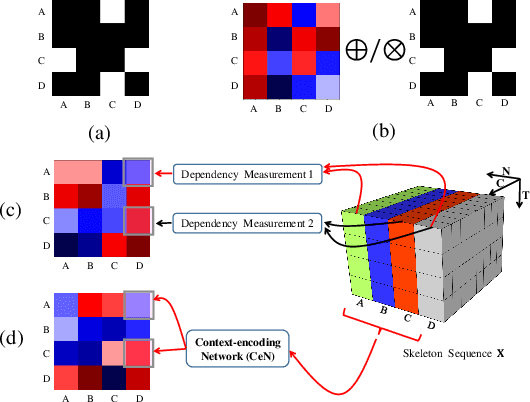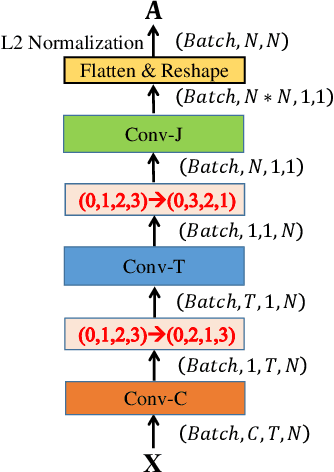Dynamic GCN: Context-enriched Topology Learning for Skeleton-based Action Recognition
Paper and Code
Jul 29, 2020



Graph Convolutional Networks (GCNs) have attracted increasing interests for the task of skeleton-based action recognition. The key lies in the design of the graph structure, which encodes skeleton topology information. In this paper, we propose Dynamic GCN, in which a novel convolutional neural network named Contextencoding Network (CeN) is introduced to learn skeleton topology automatically. In particular, when learning the dependency between two joints, contextual features from the rest joints are incorporated in a global manner. CeN is extremely lightweight yet effective, and can be embedded into a graph convolutional layer. By stacking multiple CeN-enabled graph convolutional layers, we build Dynamic GCN. Notably, as a merit of CeN, dynamic graph topologies are constructed for different input samples as well as graph convolutional layers of various depths. Besides, three alternative context modeling architectures are well explored, which may serve as a guideline for future research on graph topology learning. CeN brings only ~7% extra FLOPs for the baseline model, and Dynamic GCN achieves better performance with $2\times$~$4\times$ fewer FLOPs than existing methods. By further combining static physical body connections and motion modalities, we achieve state-of-the-art performance on three large-scale benchmarks, namely NTU-RGB+D, NTU-RGB+D 120 and Skeleton-Kinetics.
 Add to Chrome
Add to Chrome Add to Firefox
Add to Firefox Add to Edge
Add to Edge